7 Types of Beetles in Your Yard (With Pictures)
-
Pete Ortiz
- Last updated:
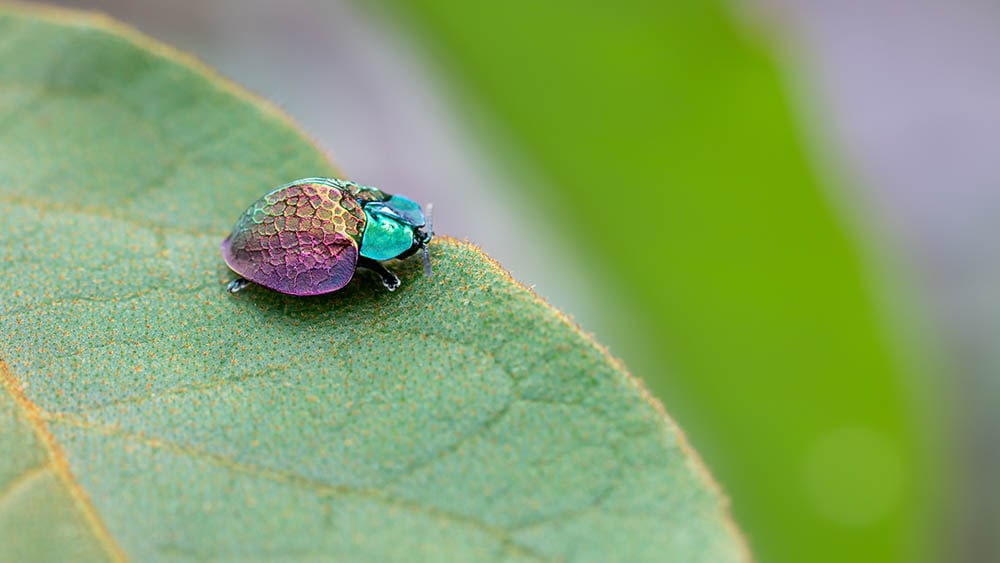
It is common to have a few bugs in your yard, especially if you have long grass or lots of plants. Beetles, in particular, are pretty common, and you are bound to run into one or two. These bugs also play an important ecological role, and you might want to think twice before getting rid of them.
If you have come across beetles in your yard, you might have noticed that they are not all the same type. So, how many types of beetles are there? We have covered the seven common types of beetles you are most likely to come across in your yard.
The 7 Types of Beetles in Your Yard
1. Ladybug Beetle
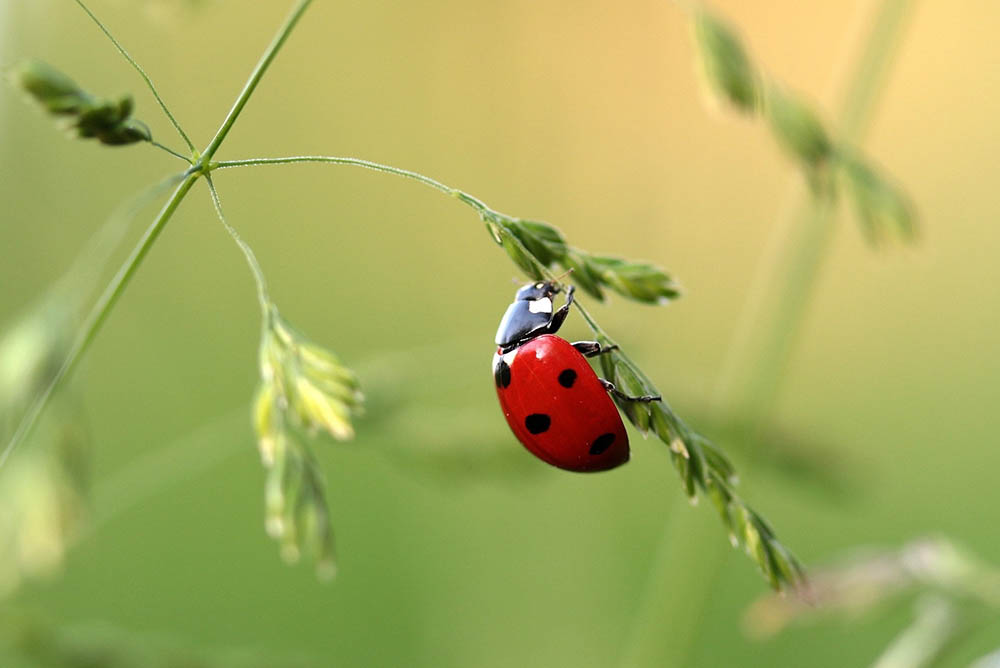
| Distinctive Markings: | Black spots all over a red body |
| Placement: | On flowers and leaves of plants |
The Ladybug is the most common beetle and the one most people are familiar with. These beetles are not dangerous to pets or humans. However, if your pet eats too many, they can be harmful.
Ladybugs are often very beneficial to have on your lawn. They are natural predators of harmful insects such as aphids and other sap feeders. A single ladybug can end up eating roughly 5,000 aphids in its lifetime.
It’s easy to identify ladybug beetles. Adults typically have convex, hemispherical/oval-shaped bodies that can be yellow, pink, orange, red, or black and have distinct spots. The spots act as a sort of warning to any animals that may try to eat them.
2. Collops Beetle
| Distinctive Markings: | Black or brown spots on the body
Soft shell |
| Placement: | Adults: on leaves of plants
Larvae: on the ground and in the soil |
Collops beetles are predaceous and tend to feed on other insects. Like ladybugs, these beetles are essential in maintaining a healthy yard since they eat the aphids and nymphs that tend to suck sap from plants. Unlike other beetles, however, collops do not have a hard outer shell.
The larvae are active on the ground and in the soil, where they eat any soil-dwelling insects and grasshopper eggs. Their presence in your yard may be a good sign since they eliminate other bugs while also aerating the soil.
3. Checkered Beetle

| Distinctive Markings: | Expansive head compared to the thorax |
| Placement: | On leaves and flowers of plants and the ground |
Although the checkered beetle can be found worldwide, it’s more prevalent in places with a warm climate. Both the adult and larvae are predaceous and feed on insects, especially wood borers. Some adults feed on pollen, while a few of them are scavengers.
Checkered beetles are a bit hard to identify. They usually have a long, narrow, colorful body covered with bristly hairs. The head is usually more expansive than the thorax and narrower than the abdomen. Their antennae also vary considerably depending on the species.
4. Tiger Beetle
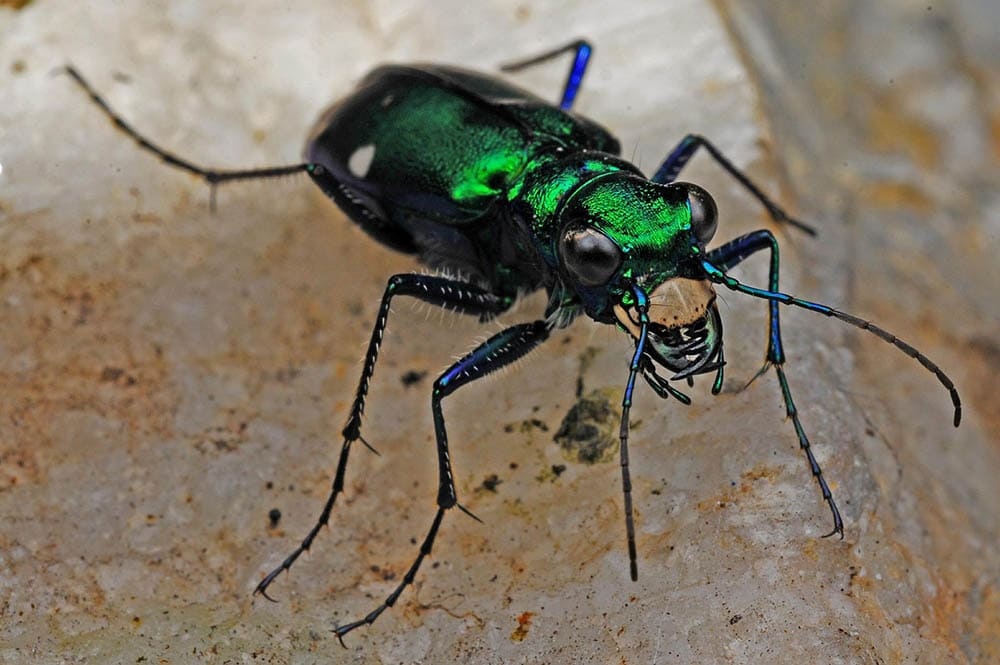
| Distinctive Markings: | Large eyes and mandibles |
| Placement: | Adults: on the lawn
Larvae: in the ground/ hiding spots |
The tiger beetle is an endangered species and if you find one in your yard, consider trapping it in a jar and releasing it elsewhere instead of killing it. Be careful when doing it because, as the name suggests, this beetle is known for being aggressive.
Tiger beetles usually have large eyes for spotting prey and long slender legs that make this beetle very fast. Their mandibles are large and curved to enable them to catch and hold prey that can be twice their body size.
The larvae can burrow several feet into the ground in search of prey. They also use the burrows as their dwelling and hiding spots and will emerge once in a while to catch prey.
5. Tortoise Beetle
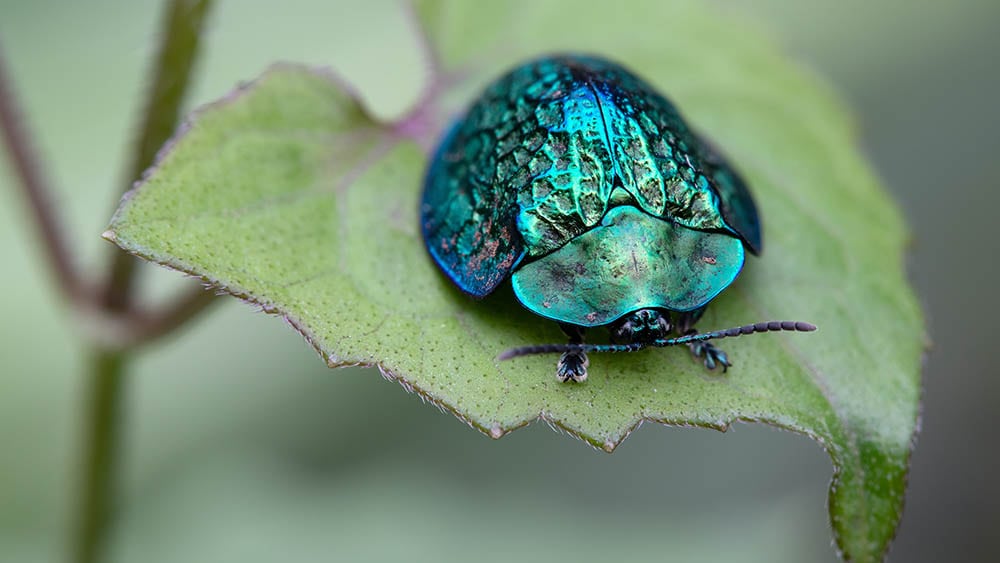
| Distinctive Markings: | Metallic coloration |
| Placement: | Under rocks & debris |
As the name suggests, these small beetles bear a close resemblance to miniature turtles. They are rarely if ever, found in large numbers. The larvae use frass and debris to disguise and protect themselves against predators.
They are small and oval¹ with hard wing covers that clamp agist leaf surfaces. The wings also work by hiding its head and legs, which makes it difficult for predators to grab them. They are often dark in color and may have specific distinct metallic coloration, usually gold or orange, which enables them to blend in with the leaf surface.
6. Soldier Beetle

| Distinctive Markings: | A black spot behind the head and on each wing cover |
| Placement: | On plants and flowers |
Soldier beetles live throughout the winter as larvae and mainly feed on insect eggs and other insect larvae. They later transform into pupae during the summer when temperatures are higher, while adults appear in late July.
These beetles are usually very active and often fly around in the yard. Most people confuse them with wasps or bees since they move quickly between flowers in search of pollen. They are important pollinators and are good to have around, especially if you have fruit or cherry trees. Soldier beetles cause no damage to plants, pets, or humans.
It’s pretty easy to identify soldier beetles since they have distinct markings compared to other types of beetles. They are roughly half an inch long with yellow to brown wing covers, black heads and legs, and a black spot behind the head and on each wing cover.
7. Rove Beetle
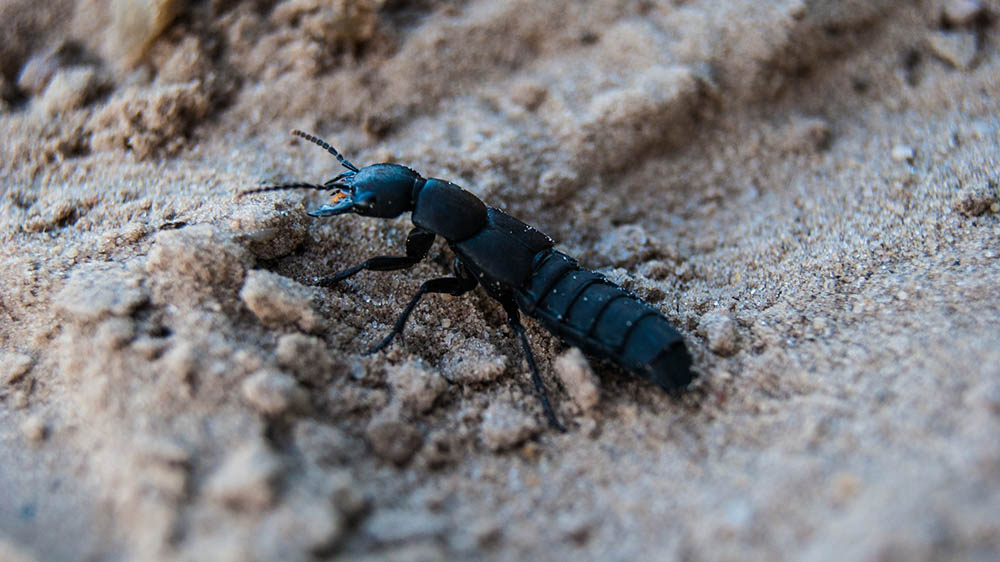
| Distinctive Markings: | Slender brown body, short wings |
| Placement: | Moist habitats, under rocks or in compost piles |
Rove beetles are mostly found in moist habitats with decaying matter and are usually hidden under rocks or in compost piles. You can easily recognize this beetle by its slender, black, or brown body and shortened front wings that look like nubs on the abdomen.
The adults look like earwigs, and it can be hard to tell them apart. However, earwigs usually have movable forceps at the end of their abdomen, which are absent in rove beetles. They are also nocturnal and generally have long life spans.
How To Get Rid of Beetles
If you get queasy around bugs, you might want to eliminate the beetles in your yard. Luckily, there are several ways you can do that:
1. Insect Traps
Sticky traps are pretty effective for crawling insects. You can purchase a few of these traps online or at the hardware store and place them in all the places you have seen beetles or noticed signs of beetle activity. They emit a scent that attracts beetles, and the glue on the surface holds them fast when they land. You can then release them in a wild environment far away from your home.
2. Insecticide
Insecticides, especially those made from pyrethrin, work quite effectively. The pyrethrin works on the beetles’ nervous system and kills them rapidly. For best results, spray the pyrethrin directly on the beetles.
3. Neem Oil

Neem oil has been used as a pest repellent for centuries. It kills more than 200 species of insects without causing any harm to the environment. Spray it all over the yard to deter and kill the beetles.
4. Lavender Oil
Although humans like the smell of lavender oil, beetles hate it. Applying lavender oil in your yard repels beetles. It’s also cost-effective and non-toxic, making it ideal for homesteads with young children and pets.
5. Hire an Exterminator
Sometimes the best action is to hire a pest management professional, especially if you have a beetle infestation in your yard. Exterminators know the best way to identify the source of the infestation and get rid of them.
Conclusion
Beetles may be attracted to your yard for several reasons. Often, they may gravitate toward it in search of food and water. Knowing why you have beetles in your yard is the first step in preventing them.
Beetles can cause significant damage to your yard and home. Some species may destroy wood, leading to rot. Ensure you know the kind of beetle in your yard so you can figure out the next steps to take.
Featured Image Credit: Filipe Resmini, Unsplash
Contents


